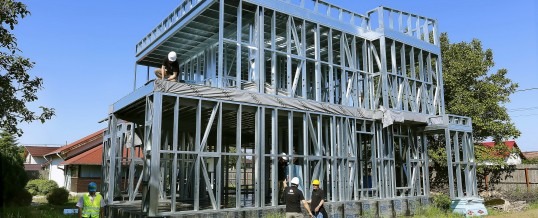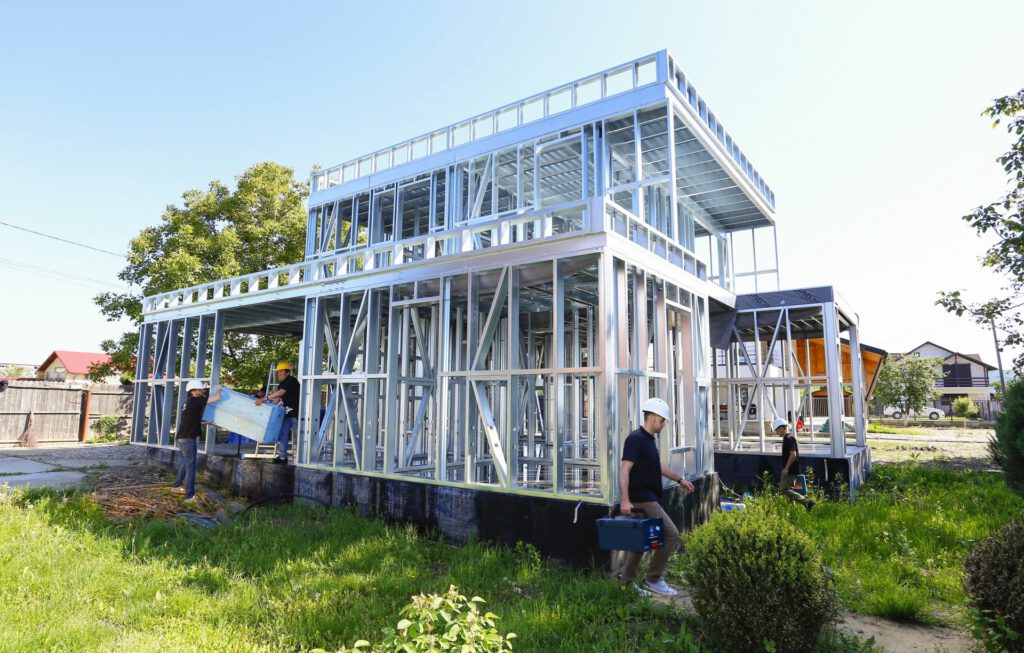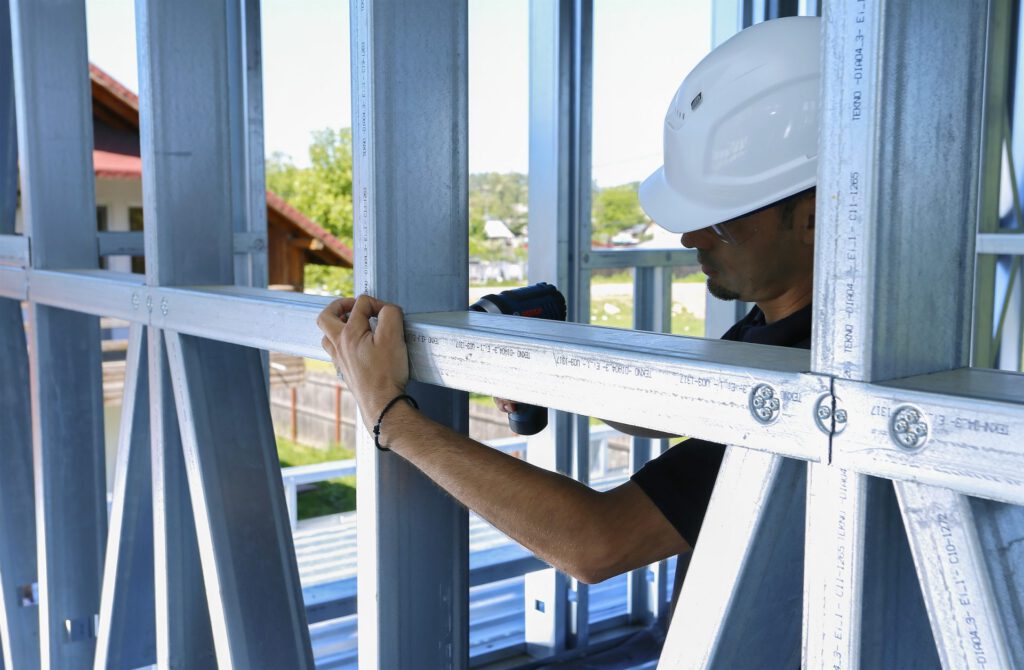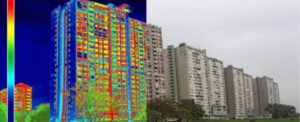Because we ran into this problem, we want to offer some pointed answers to the objections brought by an architectural office regarding the houses on the structure with light profiles and their unsuitability for the seismic zone of Bucharest according to the excerpt from the normative P100/1-2013.
Views of:
Engineer Catalin Bordei – Catapult project
Eng. Saiu Cristian, expert in the evaluation commissions of the verifiers
Dr. Nagy ZSOLT, Cluj metal department,
request #romehoME
To the extent of the available time, please send us a point of view with certain objections raised by certain designers, such as that the solutions for houses on the structure with light profiles are not suitable for the seismic zone of Bucharest. attached, please find an extract from the P100/1-2013 standard with some passages underlined.
Can you provide us with arguments for/against or can you tell us if the respective reasoning is correct?
answered Dr. Nagy ZSOLT
Hi !
P100 largely refers to dissipative structures.
For weakly dissipative structures, or designed in the elastic domain, there is practically nothing left to apply from P100.
As most designers live with the impression that a structure can be economically designed only if it is designed as dissipative, they come to such statements that the solutions for houses on the structure with light profiles are not suitable for the seismic zone of Bucharest.
Things are as follows:
In order to dissipate energy accumulated from the seismic movement, P100 obliges the use of certain classes of sections.
As light profiles are in most situations class A 3 and class 4, they are not at all suitable for energy dissipation and are designed in a non-dissipative concept (q=1.00 … 1.50).
The efficiency of these systems is low in mass (that’s why you have to make dry floors and not from concrete), which is why in general the earthquake does not dimension them, or seismic combinations intervene only punctually, when designing some bracing.
In conclusion, if the earthquake does not measure, you can do them from Bucharest to Honolulu in the ELASTIC field and they are still effective.
This is after their classification according to section classes.
If we take it after research, I can show you that it shows an article by the Americans, in which, based on a 1-1 scale experiment, they found that these structures, if they are covered with OSB, dissipate energy, reaching values of over 5 the q factor.
Determined on a 3- or 4-story building and shaken on the vibrating table.
In my opinion, lack of experience makes many to issue such opinions.
We have an article about Emil’s house in Ploiesti, on which we also did dynamic measurements, in order to capture the damping effect of the materials that are mounted on the structure.
And we also have an article published at a seismic conference in Japan, if I remember correctly – from the processing of the results on the respective real structure.
An article of mine where I wrote about houses and there is also a reference to the article from Japan.
Answer Ing. Saiu Cristian
The provisions sent are old, (we are talking about versions before 2006, by the way, if you go to ch. 1.5 with small exceptions, all the rules are after 2006) they were just twisted, and so to speak, those ductility classes were jammed.
The romehoME boxes are dissipative, not to say very dissipative, and must meet the conditions from the beginning. 6.2, the ratios between fy, max and fy also taking into account the overresistance factor.
In principle, the specific requirements of the section IV class must be strictly observed, and great attention to the concept.
Personally, this type of structures can be affected by earthquakes in conditions of faulty concept, i.e. columns on beam, missing columns, crazy clamping between elements or crazy clamping concept so that crushing of the element or hole wall occurs, underrated loads, can be affected from carelessness in execution, or bad use, overloads, or I know what.
These houses are sensitive to wind. This is where you have to be careful. You probably have the problem of securing the rigid washer on the ground floor or between the 1st floor and the attic or attic.
This is excellent if you are pouring lightweight concrete.
Designing a structure as dissipative or weak-dissipative is up to the designer.
In principle, any type of structure can be designed according to one of two approaches. The choice of the design principle is economic in nature and depends on the type of structure and the seismic zone.
Thus, light structures (such as metal halls without a drawbridge) attract relatively low seismic forces, due to the mass and low height of the structure.
The most economical design of such structures is based in most cases on the weak-dissipative structure principle, because it does not require special requirements imposed on the structural elements.
Another example in which design based on the low-dissipative structure principle can represent an economic solution are the constructions located in areas with low seismicity.
And in this case, the seismic forces are small, so that the structure can be designed to respond in the elastic domain under the action of the calculated seismic loads, so that an anti-seismic conformation of the structure is not necessary.
Multi-storey structures located in areas with high seismicity attract high seismic forces, so that their design in the elastic domain (as well as low-dissipative structures) is generally uneconomical.
In these cases, the principle of dissipative design of the structure is adopted.
All design criteria refer to structures designed according to the principle of dissipative behavior of the structure.
Answer Ing. Catalin Bordei
Hello,
In the attached normative extract, it is specified that structures made up of weakly dissipative elements will have a seismic force 4 times higher than a structure with dissipative elements.
It does not say that they cannot be used.
In the conditions that a house on a structure with profiles made of cold-bent galvanized sheet has a weight of about 40% of that of a normal house, the seismic force becomes lower than the wind force, in this way these structures receive the generic name of “sensitive houses to the action of the wind”, the earthquake becoming a secondary action.
I can have this discussion with any verifier; )











